Face-frame joinery: ease vs. quality

Hi all,
(can someone remind me what the HTML command for paragraph return is?)
I’ve got to make a set of kitchen cabinets soon, and find myself pondering yet again the best/most efficient way to do the face-frame joinery. The last few times I’ve done them i’ve used dowels. but am not happy with the accuracy of the jig I have. I can’t justify a Festool Domino just now, so am toying with the thought using other methods.
Any favorites out there? Kreg? Beadlock? Better quality doweling setup?
I’m typically doing flush inset doors on a beaded face frame. I like to make my bead integral to the face frame rather than apply a bead later.
Here is a picture of a set I did with dowels 10 years ago. Will be doing similar this time.
Steve
Edited 1/3/2008 6:06 pm by mmoogie
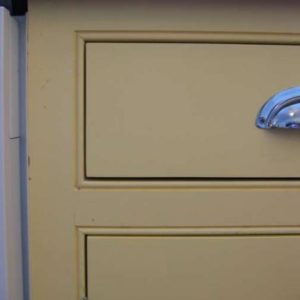


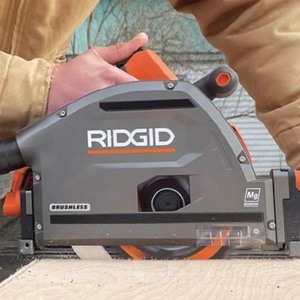
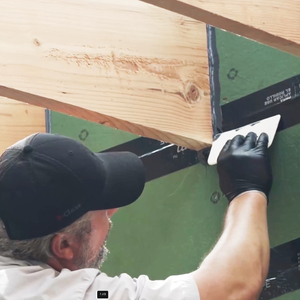
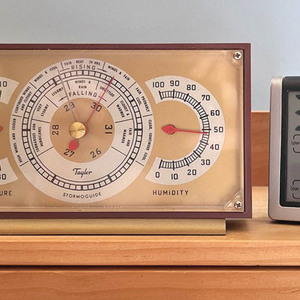
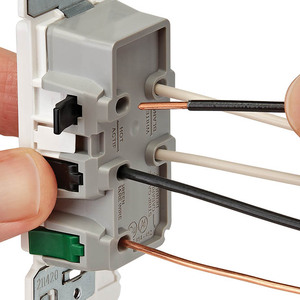












Replies
I use Kreg for just about any face frame application.
Tried FF biscuits a few times, PITA in comparison.
I've recently went with Kreg. And I ain't ever going back to anything else ( well, unless spec'ed).
Spheramid Enterprises Architectural Woodworks
"Success is not spontaneous combustion, you have to set yourself on Fire"
I've been using the Kreg for trim work for a long time now, but not face frames. I'm leaning that way because I know how fast and easy it would be, but am somewhat concerned that the joint could twist if it got hit by a heavy pot on the way into the cabinet or some similar impact.Steve
My Kreg jig has two holes that line up for two screws in a 1 1/2" piece of FF material.
Yes, mine too, but I can still twist a joint with two screws in it if I try hard enough. Can't do that with a doweled and glued joint. Steve
"Yes, mine too, but I can still twist a joint with two screws in it if I try hard enough. Can't do that with a doweled and glued joint. "what?
Put some glue in your joint. Are you implying that two wood dowels are stronger than two steel dowels, aka screws? Seriously?That doesn't make any sense.
Yes, they can twist. I've done it simply by taking the two joined pieces in my hand and twisting. I've even been able to do it to a glued kreg joint. It's end-grain after all, doesn't take much to crack it. The pre-drilled pilot holes on the side with the screw heads have a little slop in them. A doweled and glued joint solidifies when the glue dries.I'm pretty convinced it's a non-issue, but still thinking some manor of glued tenon or dowel is stronger, just not sure it's worth the extra effort. Now if I had one of those Domino joiners...Steve
Edited 1/3/2008 6:47 pm by mmoogie
You must have had a sloppy jig , or a bent drill chuck, pan head screws or something, or you are subconciously creating a reason to stay in your comfort zone, because if done correctly a double screwed, glued joint will not twist before breaking, it's physics or something!
It's a non issue, the twisting.
First time I saw pocket screwing going on in face frame assembly was in the mid 70s, in a pro cab shop in Aztec, NM.
Do you know how many faceframe joints have been done thus since then? I don't, but it must be in the millions.
Why fight it? Why question it? I can bust open dovetailed joints if I try hard enough.
Just do it.
2 screws and glued and attached to the carcass, it AIN'T gonna twist. If it somehow you do manage to..well, yer gonna break something anyway.
The only thing stronger ( in my Opinion) is a haunched mortise and tennon, and unless yer really set up for it, they take a LOT of time.Spheramid Enterprises Architectural Woodworks
"Success is not spontaneous combustion, you have to set yourself on Fire"
2 screws, 2 pockets, 2 pocket hole plugs from rockler.com.
the Kreg works pretty well...
it has it all over doweling...
Life is not a journey to the grave with the intention of arriving safely in a pretty and well preserved body, but rather to skid in broadside, thoroughly used up, totally worn out, and loudly proclaiming
WOW!!! What a Ride!
Forget the primal scream, just ROAR!!!
Toss the doweling jig in your antiques tray.
For an integral bead, biscuits will be tough, so Kreg would be the way to go. If applying the bead afterwards, because everything will be a straight butt joint, biscuits or the Kreg would work.
I'm still partial to biscuits. But that might be because I stil have several 1000 boxes of various sized biscuits to still go through.
HTML?
<br> for a line break
<p> for paragraph
sell your doweling jig on ebay,use it to buy kreg jig and screws,it is the best 100. i ever spent .
i do give the joint a squirt of glue screw it together,sand it in and i'm done. just make sure your chop saw's perfect.[i'm not telling why i say that] larry
if a man speaks in the forest,and there's not a woman to hear him,is he still wrong?
Another vote for the Kreg. It's one of those tools that you use for an hour and wonder why someone didn't tell you about it sooner. - lol
I'm not sure how well it would work if you're doing intergral beads, however. Maybe I'm just a little thick today, but how will you get the miters on the beading?
Cutting very, very carefully.
Table saw set to 45 degrees, stile on edge against the mitre fence, raise blade till cut just reaches the depth of the bead. Test cuts to get close, sneak up on it till you are there. Rip away the waste bead with the table saw, clean it up with a chisel. The rail pieces are easy, just nip 'em on the chop saw, again sneak up on it, till it fits. Gets a little trickier with mid-rails.Steve
kreg jig
If you are really curious about the strength of joints, try looking it up in "WOOD" magazine. They do scientific studies over there every so often comparing the different methods.
OTOH, when you see breaking strengths of hundreds of pounds, it seems pretty unlikely that a banged pot weighing a few ounces will hurt anything.
The ease and simplicity of using the Kreg makes it well worthwhile. Why do so many commercial furniture makers use it? Because it works.
Don K.
EJG Homes Renovations - New Construction - Rentals
Those strength studies/stories pop up in the magazines pretty regularly. If I recall, loose tenons usually win, even over mortise and tenon.In this application it's not really a question of breaking strength. There is really no worry about a kitchen cabinet face frame joint breaking. I sometimes use a sub who makes cabinets without joining the face-frame pieces at all, rather he mounts them to the carcass in individual pieces. I've not been happy with that, and run screws in from the sides after the fact to hold it all together (paint-grade work, obviously).To me it's more a question of the stability of the joint resisting movement due to humidity changes and the occasional whacking of the frame by pots and pans being put away. A cast-iron LeCruset stock put has a good deal of mass, and I've seen my wife bang 'em into our cabinets pretty good.Most of my cabinet work is paint grade, and any joint movement telegraphs through the paint eventually.I'm sure Kreg construction is fine. And that's probably what I 'll wind up doing this time. As I said, I've been using it for trim joints for years. That said, the commercial houses use it because it is fast and cost-effective, not necessarily because it is the best joint. If I was doing a lot of custom cabinet work, I think I would buy a Festool Domino Joiner, but at 700+ dollars, I can't justify it for a few cabinets a year. Anyone out there using anything besides Kreg or Biscuits? Anyone tried the beadlock system? Or the the miller tapered peg system?Steve
Just did face frame cabs for a rental. Also painted. I'll check ina couple months and let you know how theyheld up.
I have a beadlock jig. I've used it once. Maybe twice. It's slow and a PIA to use.
I have a Kreg jig. I've used it hundreds of times. For me, it's the best way to put together a face frame. You don't need the strength of a M&T joint here -- the strength in the frame comes from the cab to which it is fastened. All you need is to hold the frame together until you shoot/glue it to the cab front.
If you go with a Kreg, be sure to get a set of the joint clamps as well -- the ones that look like vice grips with round disks on the business end. These will keep the joint perfectly aligned during assembly. I glue my joints, but I don't suppose that's really necessary since, as stated above, the cab holds everything together.
Mike HennessyPittsburgh, PA
Mike,I suspected the beadlock jig is more trouble than it's worth. My partner and I have three different Kregs between us and face clamps to go with them. I have the old metal one, and the face clamp that came with that one is not as nice as the one that comes with the newer plastic ones.Steve
Edited 1/4/2008 9:46 am by mmoogie
I don't recall how much those clamps cost from Kreg or Rockler or whoever, but I somehow lost one.
A C-style Visegrip with swivel jaws and a washer tack welded on had to be cheaper tho'. I have kreg kit in the van and the super duper kit in the shop..and found those clamps I made up to be useful for a lot of other stuff too, like hanging a riggers bag on a scaffold bar. Or raising and lowering stuff with rope.Spheramid Enterprises Architectural Woodworks
"Success is not spontaneous combustion, you have to set yourself on Fire"
Contrary to what a lot of people thought, the Wood mag joint tests found the half-lap to be, by far, the strongest joint. Now, whether or not that's pertinent to your current question is up to you...just FYI.
I did some frame like what you want to do about a month ago and used the kreg jig, it works very well. The domino is nice but you still need to clamp the frame, the kreg screws are your clamp. Like other said, if you use glue, you cannot twist a FF with pocket screws. I actually made a mistake on on FF and tried to take it apart. I used titebond II and had only screwed it together about 30 minutes before I realized my error but that was too late. I tried to take it apart but there was no way I could get it apart without breaking the wood (poplar). After that, I would never use anything other than titebond, that strength was amazing, and after only 30 minutes. After any join with pocket screws and titebond sets, there is no way in the world pots, pans, kids or anything else could move that joint. Really it is probably impossible for the joint to break, the wood surrounding it would before the joint.What you talking about as far as just using pocket screws, no glue, twisting is probably dependent on the type of wood. Some of the softer wood would allow you to twist if you applied enough pressure. That's not the joint as much as its the softer wood not holding the screws as much. But I thinks it crazy to use pocket screws without glue. I think 99% of the time the screws would be perfect but how much effort is a little glue? Just like construction adhesive on a subfloor, nails alone wood be good but glue is the extra.
Or, you can do like Gary....<a href="http://www.garymkatz.com/TrimTechniques/jack_miter_jig.html">Gary Katz Online</a>Jimmy W.
Gary's method would make the mid rails easier, that's for sure. I'm more of a table saw guy than a router guy, so tend not to think in terms of router solutions where the table saw will work.Steve
I would prefer the "acoustic" way.
View Image
Nice little jig, Gene. How do you waste away the bead that is removed, particularly in mid-rail joints?Steve
Get it close with a jigsaw, or if you prefer to work quietly, just use a coping saw. Finish with a sharp chisel and a little sanding block.
If you enjoy working wood, this is not too difficult or time consuming. If doing it for yourself or for a friend, and making a living doing it is not a concern, this will be a great project.
To do it for profit, however, you might want to consider outsourcing.
If you inquire the whole package to Walzcraft Industries, they will make your faceframes, make you the doors that go in the openings and prefit the doors to your specified margin (I like between 1.5 and 2mm) and ship the whole thing to you. To save freight, they will ship you the frames KD and already prepped for pocketscrews.
If you're suggesting to use a jigsaw or a coping saw to make that cut you should definitely outsource your cabinetmaking.
I do, son. All of it. Another big order just shipped today.
I was just trying to satisfy those who like to work with their hands. Those who are in it for the art and the craft. They disdain those of us who use fancy machinery, or those who (gasp!) just engineer it and then buy it out.
Me, I'm only in it for the money.
Here is another view. I copied this from a post by one of the pros over at the Woodweb cabinetmaking forum.
I've made beaded faces for over 10 years, on and off. I’ve tried routers, jig saws, chisels, made a radial arm saw fixture, and had the most success with the radial arm saw with a three head cutter on it. But the best, most cost effective, tightest, most consistent method I have found is to use my fax machine.
A local door company, Meridian Products, makes the faces just as I need them, with wide stiles, fluted and pre-fit doors. I know I am not handcrafting them. But, after awhile, the joy and challenge of making my own gave way to making a profit and having consistent results. I was pleased with the cost of the frames. It really was not worth it to me any more to struggle with the quality control doing it in my shop. I fax the order, check their confirmation in detail, and in 10 days I have them delivered to my shop. It may not be what a lot of people want to do, but for me, it has really been a great technique for custom, beaded inset cabinetry!
I know, I would too. Hand tools are definitely easier on the hearing and more "romantic" way of working wood, but sometimes production is a prime. I have actually never done it the way described. By chance I just happened found that article the other day and plan to try it out next time I have a chance.
Who knows when that might be when customers are more concerned with price (ie. beads applied to the frame rather than routed into it):) Of course life would be a lot easier without customer input, but then who would pay my bills?Jimmy W.
Gene,I've been out-sourcing doors and drawer boxes for about ten years. I use Keystonewood.com out of PA.I just may start outsourcing the face frames as well, as they offer it now. They use CNC machines. Their 2006 catalogue shows rounded tenon joints, available assembled or knockdown. All things being equal, if they can give me a tenoned frame for the same price as a pocket-screwed frame, I'd be inclined to go with pre-milled tenon frames and glue them up on site, though assembled, sanded and primed is tempting too.I guess I'll price them out. Keystone is physically closer to me then Walzcraft. May make a difference in shipping.I like making a frame as much as the next guy, but business is business.Steve
Conestoga makes them too, in your choice of 1/4" or 3/8" bead.
My pricing from Walzcraft is better than that from Keystone, and the freight diff is pretty minimal. I just had a $5K order delivered from Walzcraft, and the total freight bill was less than $300.
Thing I like about Walzcraft, is the wider selection of species. Take a look at their gummy cherry, rustic brown hickory, and the new one from them, Australian wormy chestnut.
If I go the route of outsourcing, I'll definately get a quote from Walzcraft. I may yet make them myself as a have a new-ish partner working with me who I think would like this kind of work.Being in upstate New York, working on historic restorations in mostly Greek Revival housing stock, I'm working almost entirely in paint grade, so wood species means little to me, though when I relocate to Minneapolis in a couple of years it'll probably be a factor.Steve
Go with the Kreg. It's easy to use and makes excellent joints. I first used one about 5 years ago and haven't used anything else for faceframes since.
Steve
Nice detail on the FF's.(your pic)
I build mine the same as you, bead integral to the rail, any other way is cheesy to me, and a total waste of time.
I build my FF's with pocket screws and once the ff is glued to the cabinet box I dare you to try to twist one of my joints and separate them. Not going to happen. Doubtful that you could hit one of the joints hard enough with a pan to make it twist out of alignment.
Doug
I use pocket screws for face frames now. It is the best technique I've come across so far. Easy and fast -- no waiting.
I definitely like that bead detail on the image you posted.
pocket screw face frame together with type III glue;
use biscuits to attach completed frame to case(s). Never fails, at least so far.
"The nearest thing to eternal life we will ever see on this earth is a governmental program" -Ronald Reagan
I haven't used biscuits to attach the f/f to the cab yet. I use pocket holes to attach the face frame to the cab. Drill on the out side of the carcass and cover it with a raised panel end cap. This new fangled clamp from Kreg sure makes it easyhttp://www.kregtool.com/products/pht/product.php?PRODUCT_ID=72
That clamp does look very useful. Thanks Sancho.
That is probably faster. I will try that...it would seem to be easier than trying to line up the biscuits!!"The nearest thing to eternal life we will ever see on this earth is a governmental program" -Ronald Reagan
started using it for moulding on the top edge of cabs, that way not nail holes filled or otherwise can be seen
which kerr jig is the best to buy, remember I know nothing of kerr.two ways to screw up concrete 1) concrete driver 2) concrete finisher
It is KREG, and just get the 40 dollar one from Lowes and read the instructions and play with it before ya get the bigger kit.
All you need to own is a drill with a 3/8th or bigger chuck.Spheramid Enterprises Architectural Woodworks
"Success is not spontaneous combustion, you have to set yourself on Fire"
Kreg it is then. Unless my partner decides to buy a domino before we start this kitchen, which he might.I mostly work in pine on older paint grade houses. That's where I use the Kreg the most, and where I've experienced the ability to twist the joints. Cabinetry I don't do that often. When I do, I usually do them in poplar for paint grade, but I'm thinking I'm gonna do these in maple just for the heck of it.Steve
Kreg jig. FWIW That large steel clamp about 10 or 12 inches square with the vise-grip business end that slots into it is very handy. It's easier and more stable to use than the portable clamps that come with the kits. (It's one of the Christmas presents I got for myself)
--It's one of the Christmas presents I got for myself)--That is a great item. I had that on my Yule gift list for 2006 - and did get it!
Edited 1/8/2008 11:36 pm ET by OldGuy
"(can someone remind me what the HTML command for paragraph return is?)"
There is no HTML tag for a paragraph return.
The tag for a paragraph is <p>. You place the <p> at the beginning of the paragraph, and </p> at the end.
The tag for a line break is <br>. You just put <br/> where you want the line break.
IE lets you get away without closing <p>, <br>, or <img> tags (i.e., without the </p>, "/", or </img>), but it's not correct html.
Thanks Rebeccah.
KREG!!!!!!!!!!
I'm gathering your joints are butt joints.Do you mill the bead before cutting to length and then miter just the beaded section?If so is a hand saw the better choice over a jigsaw?
Yes,I mill bead onto edge of stock first, than clip the beads on the corners of one piece with the chop saw. On the receiving piece I cut the mitre into the bead with the table saw and cross-cut guide running the stock on edge and the blade at 45 degrees and set just deep enough to get through the bead, then waste away the part of the bead that needs to go buy ripping it off with the tablesaw. No Jigsaw anywhere in the process. Chisel and sharksaw for clean-up.Steve
Thanks for the reply,never thought of using a tablesaw like that.I've always loved the look of that design.I think it lets you do simple doors but still have a profile on the face frame w/o raised panel setups.
It's a classic look. Cleaning the beads is a bit a pain in day to day use, but I find it very restful design to look at.I gravitate towards table saw solutions. I seem to avoid routers when possible. I've always thought there were two kinds of people in this world...table saw people and router people...Steve
Edited 1/10/2008 12:02 am by mmoogie
"I've always thought there were two kinds of people in this world...table saw people and router people..."
Make that three types of people. You're forgetting us hand tool types. I'd do it like you do, but without plugging in. ;-)
Mike HennessyPittsburgh, PA
Yeah, I clamp a double 45'd chisel guide block with a fence on it to the stiles and after wasting a rough cut. Just pare it away.Spheramid Enterprises Architectural Woodworks
"Success is not spontaneous combustion, you have to set yourself on Fire"
Right. No slight meant towards the hand-tool brigade. I've always been meaning to pick up on my hand-tool skills, but never seem to get to it. I am getting better about keeping planes and chisels sharp though...I would really like to spend a little time at the North Bennet Street School befoore I die.Steve
Either <p>text</p> or just <br/>
I try to pick up the biscuit joiner every once in awhile, but every time i remember why I hate it. a slight bit off mark, or off height, and the thing doesn't come together flush. Plus, you need clamps. Clamps take time.
Now I use the Kreg for just about everything I can manage to justify it for. No clamps. Hell, I don't even typically glue the joints - I see no need, and none of the joints I've used it for over the past 3 years have moved at all. tight as a drum.
Justin Fink - FHB Editorial
"Everybody wants to know what I’m on...
What I'm on? I’m on my bike, busting my ### 6 hours a day…
...What are you on?"
- Lance Armstrong
No Glue????? You getting cheap or are you on a budget? :>)